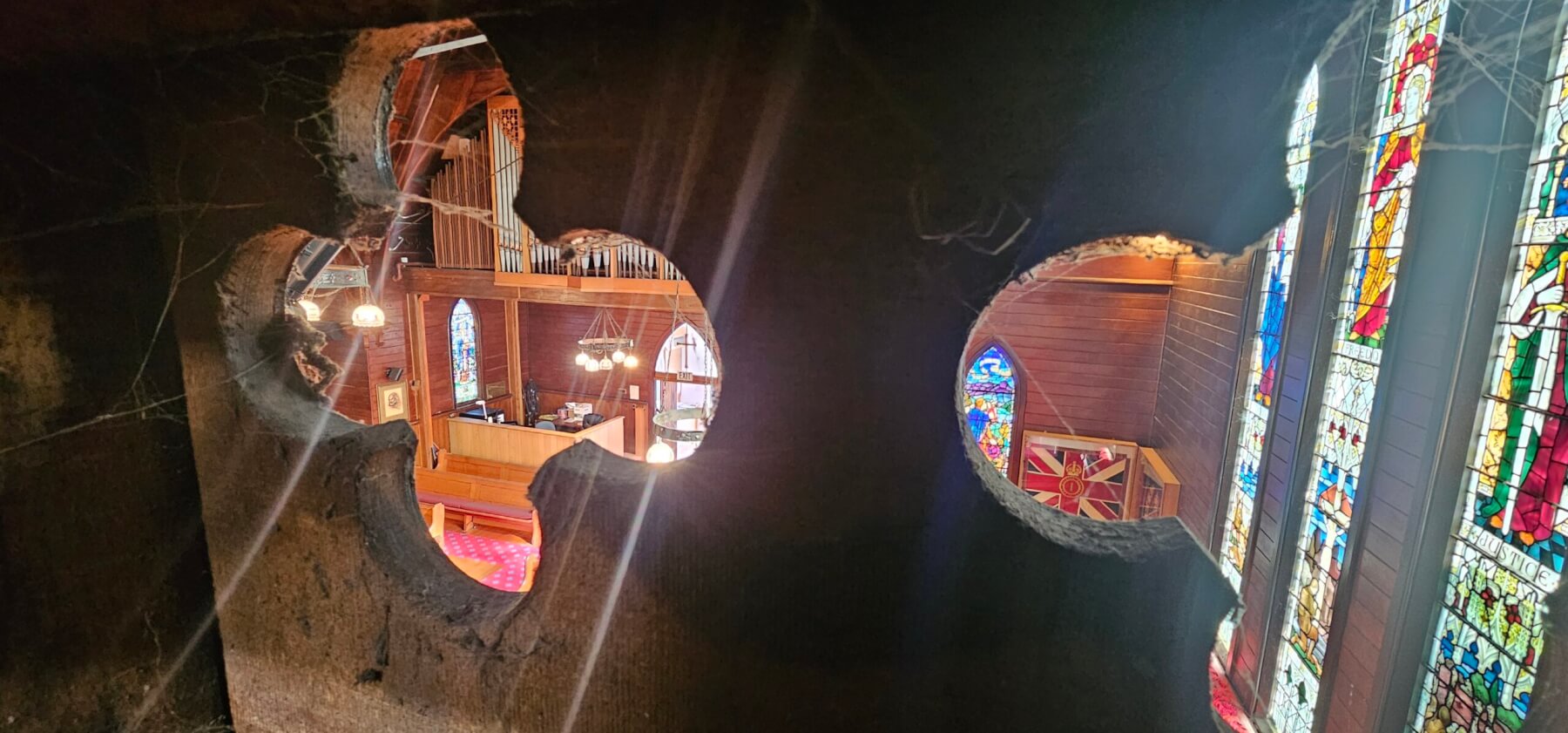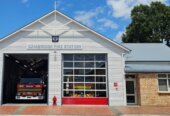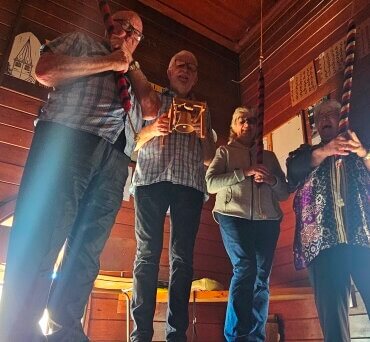
Spiritual connection: The light shines into the bell tower through the belfry windows and onto, from left Verger Ian Dunn, Steve Riddell, Veronica Cronin and Susan Hague.
When you’ve been ringing the six bells in the belfry at St Andrew’s Anglican Church in Cambridge for several years, you get to know each of them like old friends.
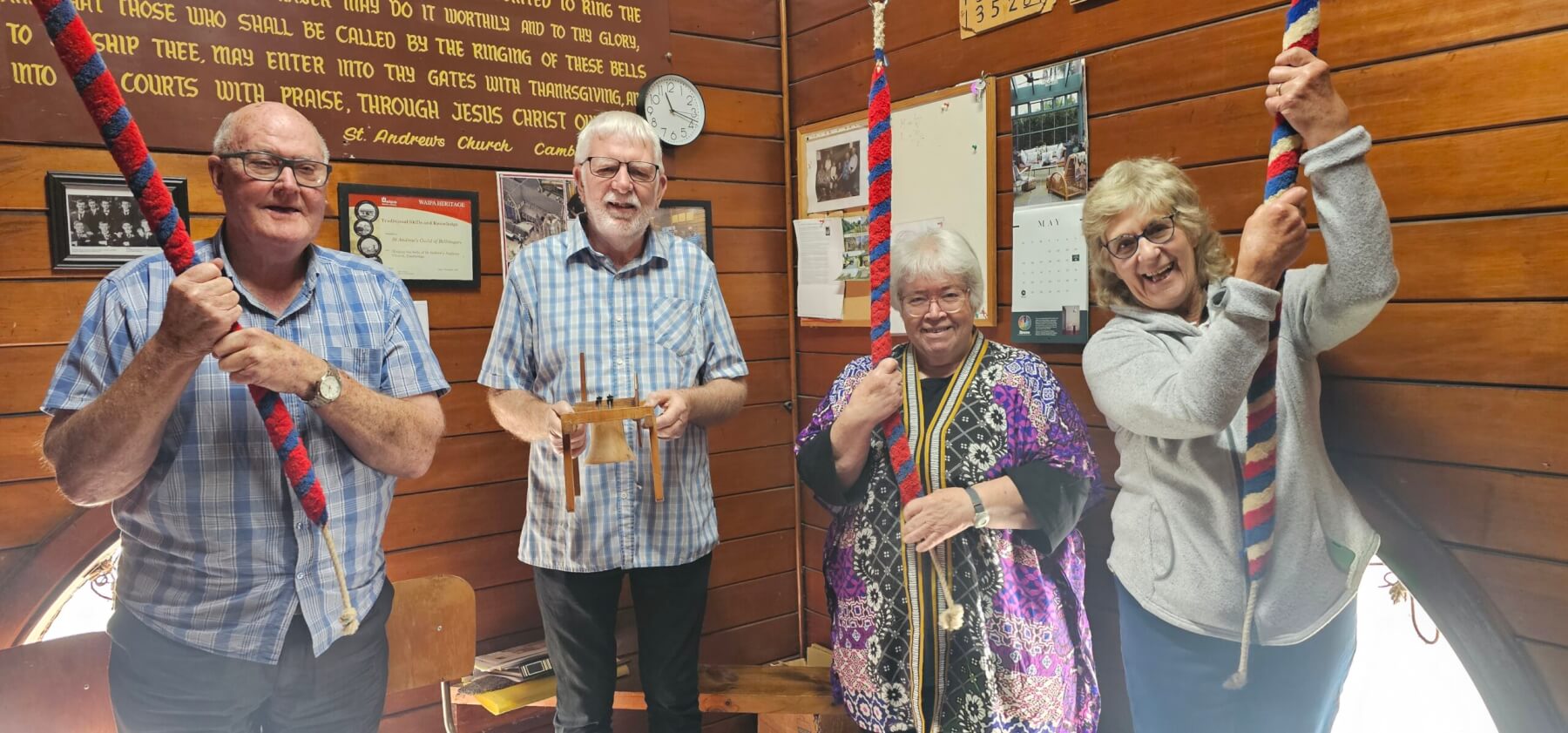
Ringing the bells, from left Verger Ian Dunn, Steve Riddell, Susan Hague and Veronica Cronin in the bell tower below the belfry. Photo: Mary Anne Gill
Number five is notoriously temperamental. Number two? They call her the “cow bell” – not because it sounds like one, but because she’s a cow to ring.
Number four, on the other hand, is the favourite: forgiving, responsive and perfect for beginners.
“She’s easier to learn,” says veteran bell ringer Susan Hague, revealing that all the six cast steel bells, installed in the church tower in 1884, are considered female.
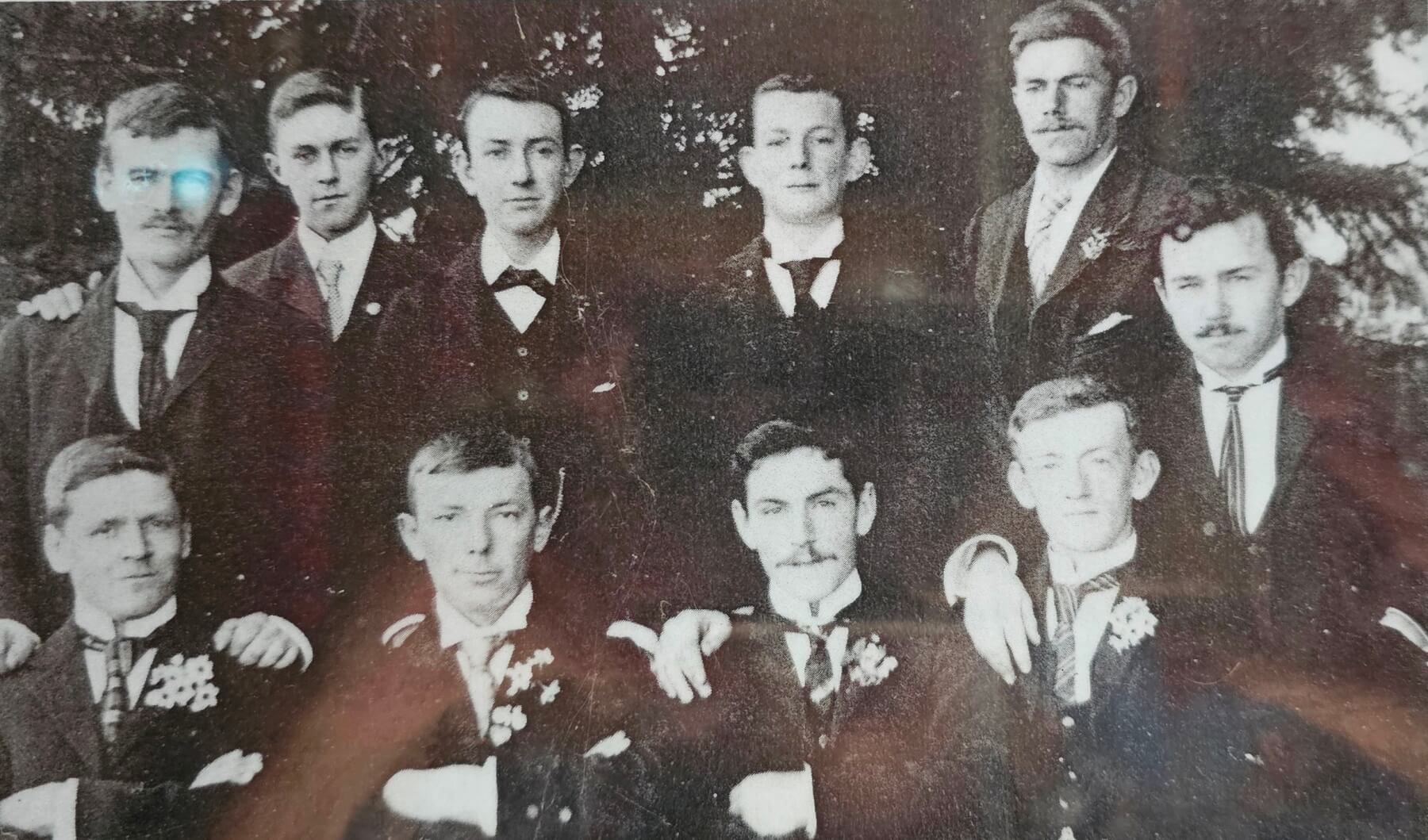
The bell ringers for most of the church’s first century were all men as this photo from 1900 shows. Now anyone is welcome to ring the bells provided they get training. Photo: Morse Family Collection
Campanologists (the formal word for bell ringers) are finally back in the tower after a year-long hiatus.
Church officials last year found one of the four kauri pillars, holding up the bell tower at the historic white church, was rotten.
During the repairs, the dwindling number of Cambridge campanologists had to stay away from the bell tower.
They were given the all clear late last month to resume weekday practice.

Ringing the bells, from left Susan Hague, Veronica Cronin, Steve Riddell and Verger Ian Dunn in the bell tower below the belfry. Photo: Mary Anne Gill
Sunday ringing is still on hold as the church puts out a call for more volunteers to fill the belfry—a dedicated space in the tower where the bells are housed and rung. The bells occupy the upper level, while the ringers work below. Some ringers have never seen the bells they ring.
The culprit behind the structural damage? Pigeons. Their acidic droppings corroded a 300mm x 300mm beam—one of the four supporting the tower. The damage only became known when painters began prepping the church exterior.
Generations of pigeons have made the church their home, nesting in nooks and crannies, and even in the guttering – resulted in rainwater being diverted into the building.
Despite decades of effort—including pigeon spikes—the birds stay undeterred.
“They just nestle into the spikes,” says campanologist Veronica Cronin. “We’ve tried for 30 years to get rid of them.”
What Cambridge really needs is a falconer, said building committee member Steve Riddell. Falcons can scare pigeons away and keep them from returning.
The pigeon problem has only worsened since the Waipā District Council removed them from the High Level Bridge during its recent refurbishment.
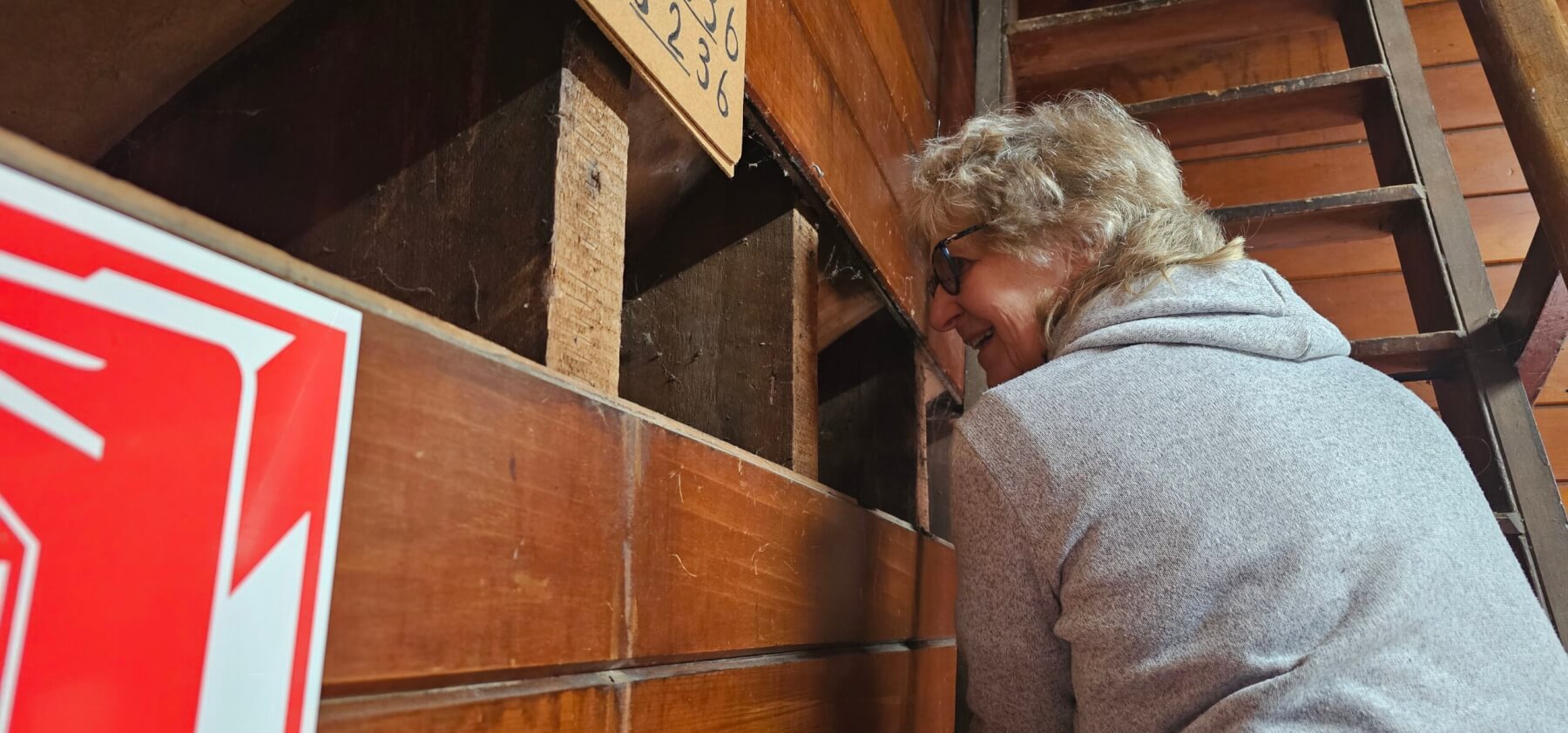
Veronica Cronin peeks through to see if the bridal party has arrived at the church. Photo: Mary Anne Gill



